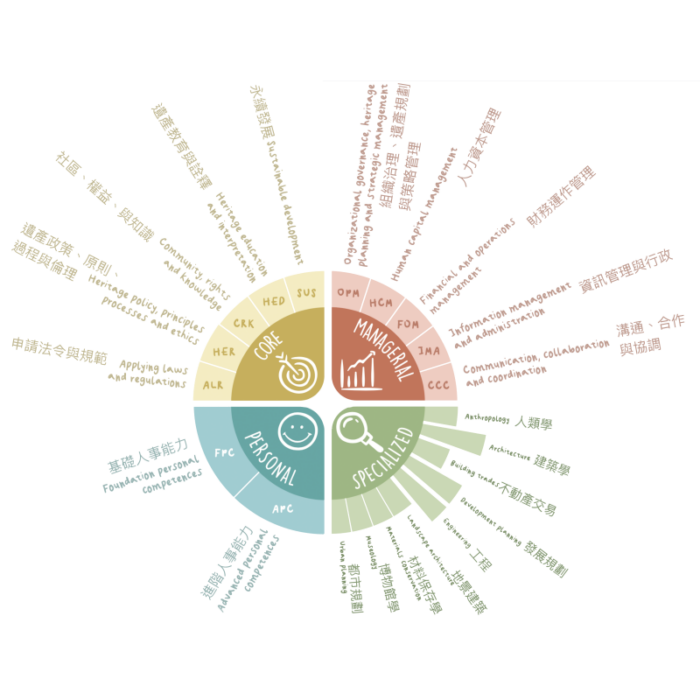新竹六燃活化再利用的芻議:從遺產詮釋與管理的觀點
Discussion on the Adaptive Reuse of the Former Imperial Japanese Navy’s Sixth Fuel Factory, Hsinchu Branch: From the Perspective of Heritage Interpretation and Management
榮芳杰 1 Fang-Jay Rongi
摘要 Abstract
本文從工業遺產活化再利用的角度,提出一些關於新竹六燃的文化資產價值詮釋與管理工作需要思考的面向,並且從永續發展的角度提出未來建立營運模式須注意的幾個管理議題。日本於第二次世界大戰末期在新竹設立海軍第六燃料廠新竹支廠作為軍事物資「異辛烷」的生產基地,當時成為新竹地區最早有系統且大規模建設的軍事工業遺產。隨著日本於二戰結束後離臺,未完工的舊有廠房設施遂被國民政府來台後的軍眷進駐成為眷村(忠貞新村)。然而,隨著文化資產保存觀念的提升,新竹市政府陸續在2010 年登錄「日本海軍第六燃料廠新竹支廠」、 2014 年登錄「日本海軍第六燃料廠煉油廠遺存建築群」,以及 2019 年登錄「日本海軍第六燃料廠觸媒工廠」等三筆文化資產為新竹市歷史建築。藉由永續發展的核心價值,提供給訪客了解新竹六燃成為法定文化資產之後的遺跡,該如何面對那段承載著過去八十年來的歷史現場,重新拾起二戰時期的工業遺產、眷村場所,甚至是罕見的霜毛蝠棲息地的故事。
This article seeks to propose some ideas about the value interpretation and management of the former Imperial Japanese Navy’s Sixth Fuel Factory, Hsinchu Branch as cultural heritage, and suggest a sustainable mode of operation from the perspective of the adaptive reuse of industrial heritage. In the final phase of WWII, the Sixth Fuel Factory was set up as a base for the production of isooctane for military use. This factory was the first systematic and large-scale military industrial complex in Hsinchu at that time. Following the Japanese withdrawal from Taiwan and the arrival of the Nationalist government after the end of the war, the aborted factory facility was repurposed for a military dependents village (i.e., the Zhongzhen New Village). Subsequently, the heightened awareness of cultural asset preservation prompted the Hsinchu City Government to register the “former Imperial Japanese Navy’s Sixth Fuel Factory, Hsinchu Branch,” the “former Imperial Japanese Navy’s Sixth Fuel Factory Refinery Complex Relic,” and the “former Imperial Japanese Navy’s Sixth Fuel Factory Catalyst Division” as historic buildings respectively in 2010, 2014, and 2019. No sooner did the Sixth Fuel Factory become part of the cultural heritage protected by law, than we have to tackle the issue as to how to recount the stories of this 80-year-old historic site that not only bears the traces of a war industrial facility and a military dependents’ village, but also serves as the habitat of rare Asian parti-colored bats.
關鍵詞:工業遺產、遺產詮釋、遺產教育、管理維護、可適性再利用
Keywords: Industrial heritage, Heritage interpretation, Heritage education, Conservation management, Adaptive reuse
1. 國立清華大學環境與文化資源學系、人文社會學院學士班 合聘副教授、國立陽明交通大學客家文化學院 兼任副教授。
i. Jointly Appointed Associate Professor, Department of Environmental and Cultural Resources and Interdisciplinary Program of Humanities and Social Sciences, National Tsing Hua University、Adjunct Associate Professor, College of Hakka Studies, National Yang Ming Chiao Tung University.


